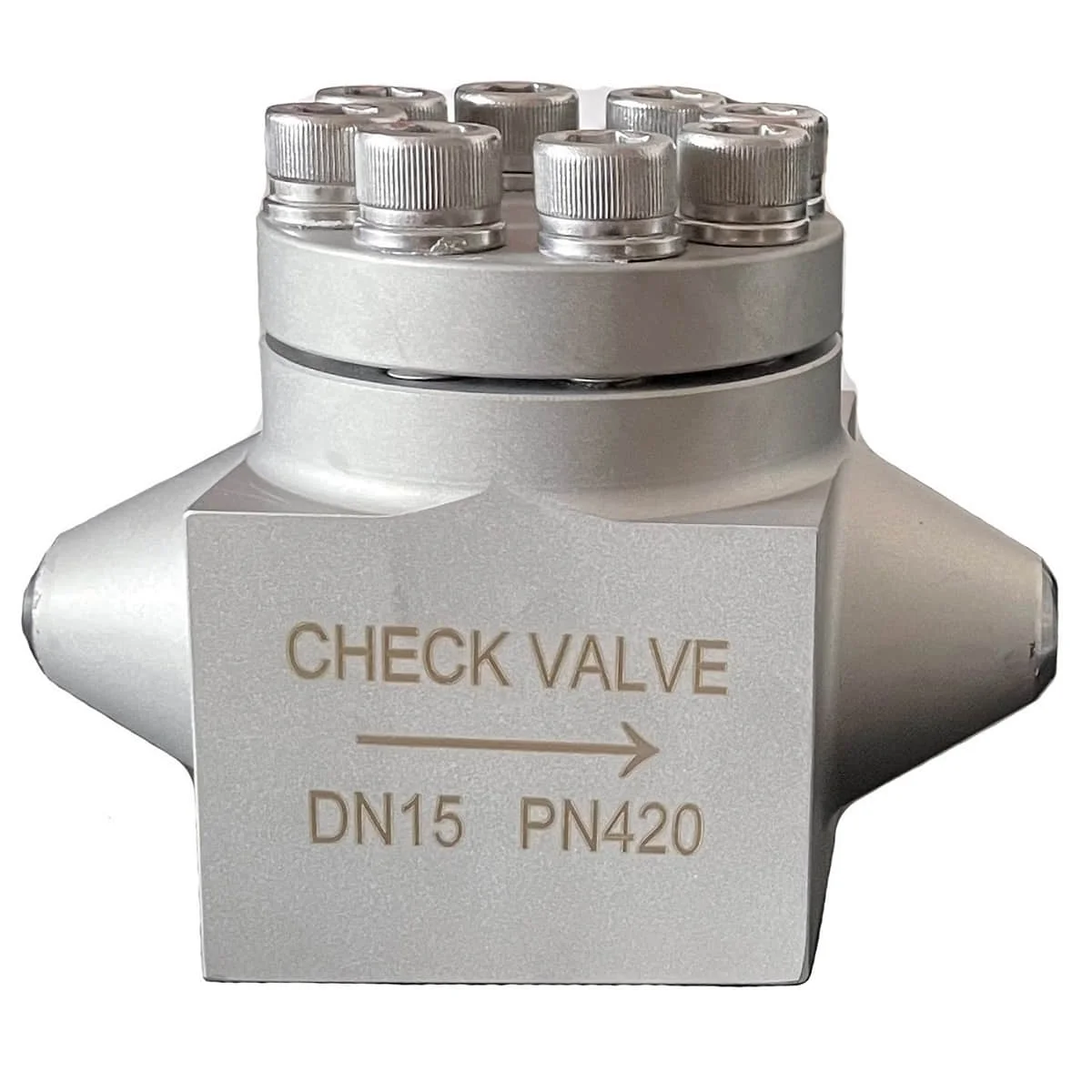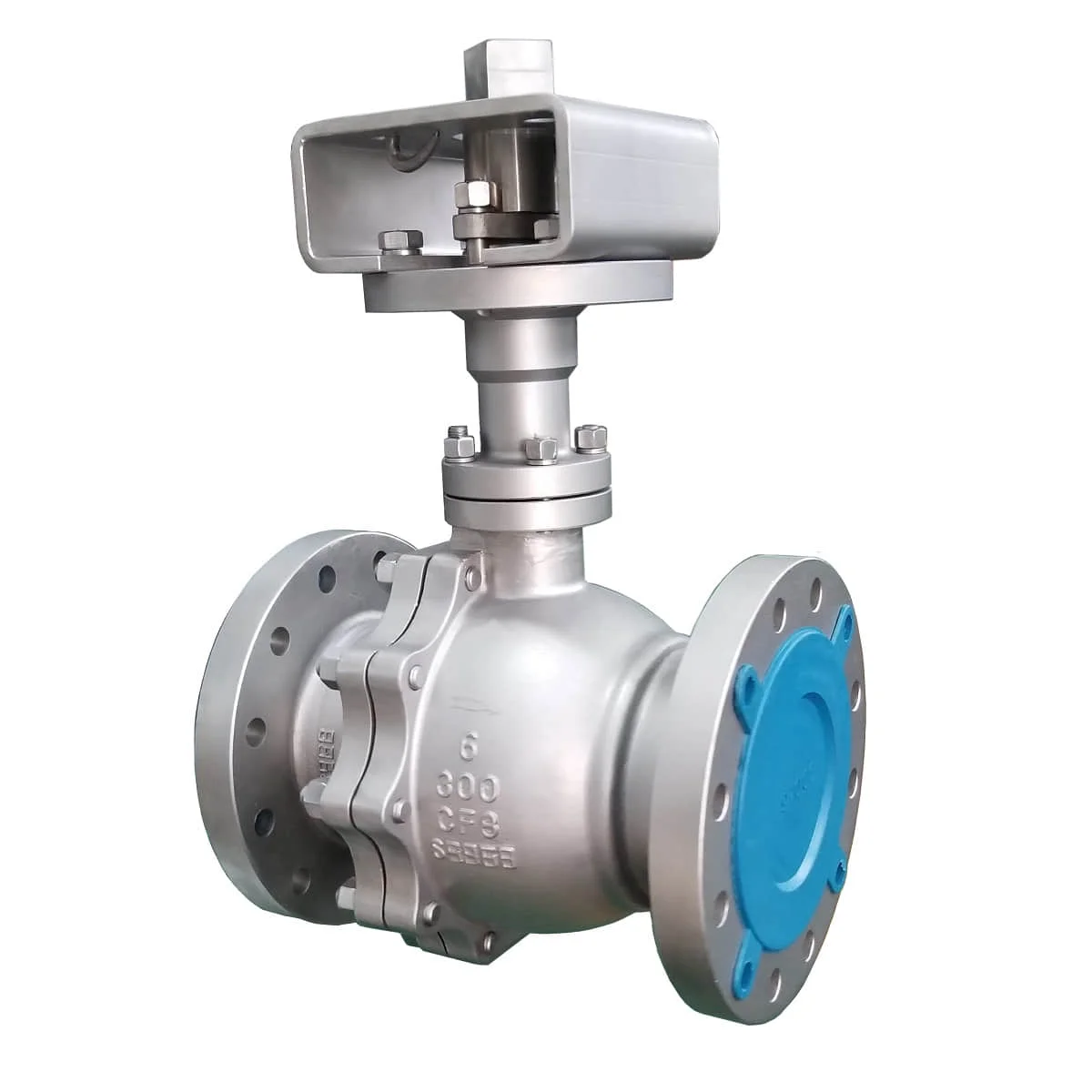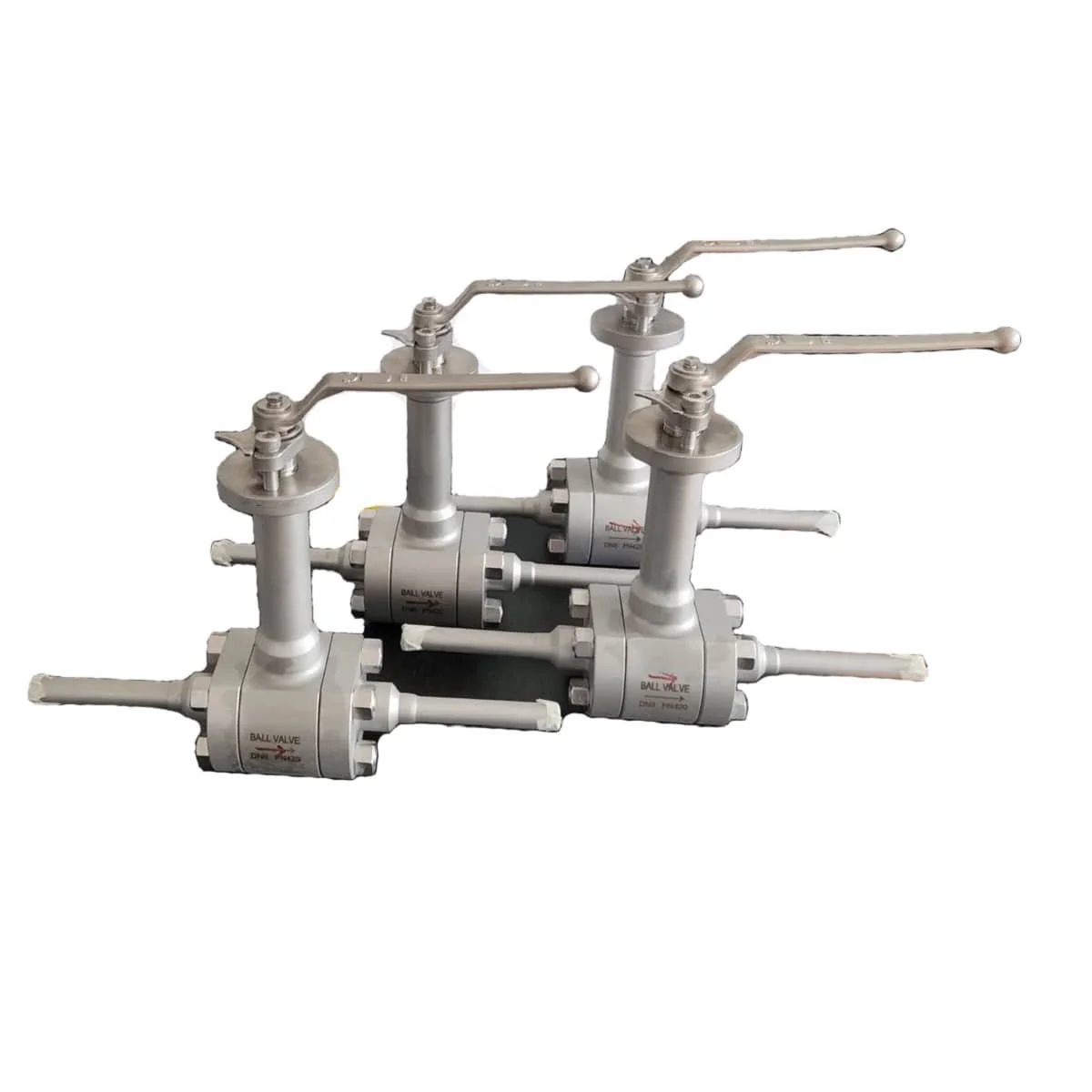
The cng lng cryogenic check valve ensures reliable backflow prevention in extreme low-temperature environments like lng and cng systems, featuring austenitic stainless steel for superior corrosion resistance up to -196°c and pn40 pressure ratings.
The cng lng cryogenic check valve ensures reliable backflow prevention in extreme low-temperature environments like lng and cng systems, featuring austenitic stainless steel for superior corrosion resistance up to -196°c and pn40 pressure ratings.
Below is a typical specification sheet for a cryogenic valve, designed for ultra-low temperature applications.
| Size | DN15 |
|---|---|
| Rating | PN420 |
| End Connection | BW as per ASME B16.25 |
| Temperature Range | -196 ℃ |
| Body and Bonnet | ASTM A182 F304 |
| Plug | ASTM A182 F304 + HF |
| Seat | PCTFE or HF Metal |
| Actuation | Spring Loaded |
The CNG LNG Cryogenic Check Valve is a specialized non-return valve engineered for extreme low-temperature applications, providing dependable backflow prevention in liquefied natural gas (LNG) and compressed natural gas (CNG) systems. Designed to operate reliably from -196°C to +80°C, this Low Temperature Backflow Valve features an extended bonnet and impact-tested austenitic stainless steel construction to prevent material embrittlement and stem freeze-up, ensuring safe and efficient flow control in cryogenic pipelines. Ideal for LNG terminals, CNG storage, and industrial gas distribution, it offers superior corrosion resistance against moisture-induced pitting and thermal stresses, making it a critical component for protecting pumps, compressors, and infrastructure in harsh cryogenic environments.
Compliant with BS 6364 for cryogenic valves and API 594 for check valve design, the Lng Check Valve is available in swing, lift, or dual-plate configurations, with sizes from 1/2" to 24" (DN15 to DN600) and end connections including flanged (ASME B16.5), butt-weld (B16.25), or wafer types. It supports pressure ratings up to PN40 (ANSI Class 150-600) and full vacuum service, with extended stems (250-500mm) to isolate the packing gland from cryogenic temperatures, preventing ice formation and leaks. The valve undergoes cryogenic hydrostatic testing at -196°C with liquid nitrogen or helium leak detection, ensuring zero leakage per Class VI standards and bubble-tight shutoff even under thermal cycling. Certifications like DNV for marine use and NACE MR0175 for sour service validate its performance in Industrial Cryogenic Valve applications, from air separation plants to LNG carriers.
The Cryogenic Check Valve utilizes austenitic stainless steels (304L/316L) with Charpy V-notch impact testing (>27J at -196°C) to resist brittle fracture, while optional Inconel or Monel trim enhances resistance to corrosive cryogens like CO2 or ammonia. Its Cng Non-return Valve design minimizes pressure drop (Cv up to 12,000) for efficient flow in high-throughput systems, and features like spring-assisted closure reduce water hammer in dynamic LNG regasification processes. Surface passivation and electropolishing prevent external corrosion from atmospheric moisture, extending service life up to five times longer than standard valves in cryogenic duty. Nondestructive testing (RT, UT, PT) per ASME Section V ensures defect-free construction, with tensile strengths exceeding 515 MPa for durability under pressure surges and vibration.
Compared to conventional check valves, the Low Temperature Backflow Valve excels in sub-zero conditions without galling or seat damage, offering a compact, lightweight alternative (up to 50% lighter) for space-constrained LNG storage tanks or CNG fueling stations. Its modular design allows for easy in-line maintenance, reducing downtime in critical operations, while fire-safe API 607 compliance adds safety in flammable gas environments. Customizable options, such as bellows seals for zero-emission or cryogenic extensions for deeper cold zones, ensure adaptability for diverse applications like hydrogen liquefaction or medical oxygen distribution.
Addressing key challenges like backflow contamination, thermal contraction leaks, and equipment freeze-up in Industrial Cryogenic Valve systems, this Lng Check Valve incorporates double O-ring stem seals and a robust hinge mechanism for enhanced integrity. Its seamless integration with automated controls via position indicators supports predictive maintenance, minimizing operational risks in LNG liquefaction or CNG compression facilities. Whether preventing reverse flow in cryogenic transfer lines or safeguarding regasification units, the CNG LNG Cryogenic Check Valve delivers unmatched reliability, safety, and efficiency for global low-temperature industrial operations.
Engineered for reliable backflow prevention in cryogenic LNG and CNG systems with low-temperature durability.
Cryogenic valves are designed to handle extremely low temperatures and prevent leakage of sensitive cryogenic fluids. While various types exist, all share a basic feature: a tight shut-off to ensure safety and efficiency.
Triple-offset butterfly valves are ideal for cryogenic service due to their non-friction, metal-to-metal seal that ensures bubble-tight shut-off. They provide fast opening/closing and are well-suited for remote operation. Example: Durco TX3 with excellent shutoff, low torque, and reduced wear.
Featuring a spherical body and a disc that rotates 90° to the seat plane, these valves provide long-term sealing. However, they are not suitable for high flow rates due to erosion risks. A full Stellite trim is recommended to reduce wear since cryogenic fluids lack lubricity.
Widely used in liquid gas applications, double-seal ball valves (e.g., L&T, AMPO Poyam) provide excellent flow characteristics and a tight seal. Their design incorporates a vapor space that keeps gland packing near ambient temperature, reducing thermal conductivity. Best for unrestricted flow paths, though seals and the ball may wear over time.
Equipped with a wedge-shaped gate, these valves ensure minimal pressure drop when fully open, making them desirable for large-size applications. Brands like Poyam, L&T, and NEWCO Douglas-Chero are commonly used. However, gate valves are more difficult to actuate compared to butterfly valves and are prone to wear under frequent operation. An advantage: metal-to-metal sealing avoids cold flow issues seen in Teflon-sealed ball valves.

| Organization | Standard | Description |
|---|---|---|
| ANSI | American National Standards Institute | General industrial standards |
| API | American Petroleum Institute | Standards for oil and gas industry |
| ASME | American Society of Mechanical Engineers | Boiler and pressure vessel codes |
| BS | British Standards | UK national standards |
| GB, JB, HG | China Valve Standards | Chinese national and industry standards |
Upstream, midstream, and downstream operations, including drilling, refining, and transportation.
Handling corrosive and hazardous chemicals in various chemical plants.
Steam, water, and fuel systems in thermal, nuclear, and hydroelectric plants.
Municipal water supply, wastewater treatment, and industrial water management.
Heating, ventilation, and air conditioning systems in commercial and industrial buildings.
Sterile and hygienic applications, precise flow control in sensitive industries.

The 2-piece cryogenic floating ball valve provides...

The cng lng cryogenic ball valve ensures reliable ...